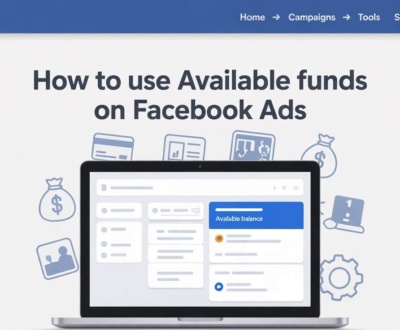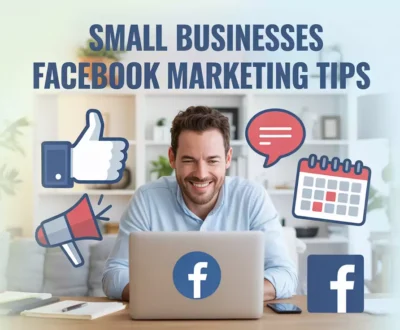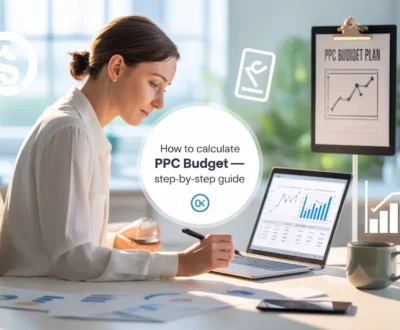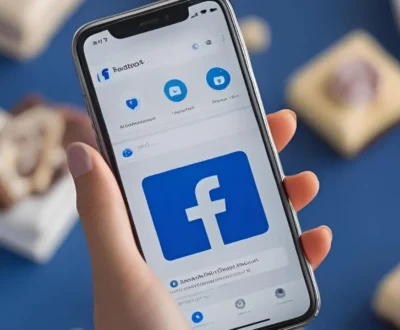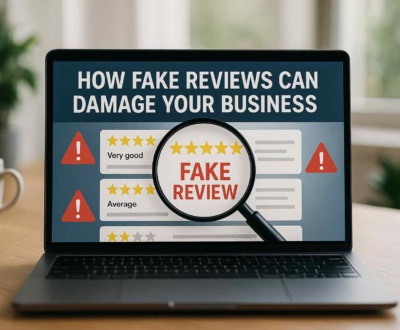Is Bing Ads Cheaper Than Google AdWords? A Comprehensive Guide
- April 22, 2025
- Uncategorized
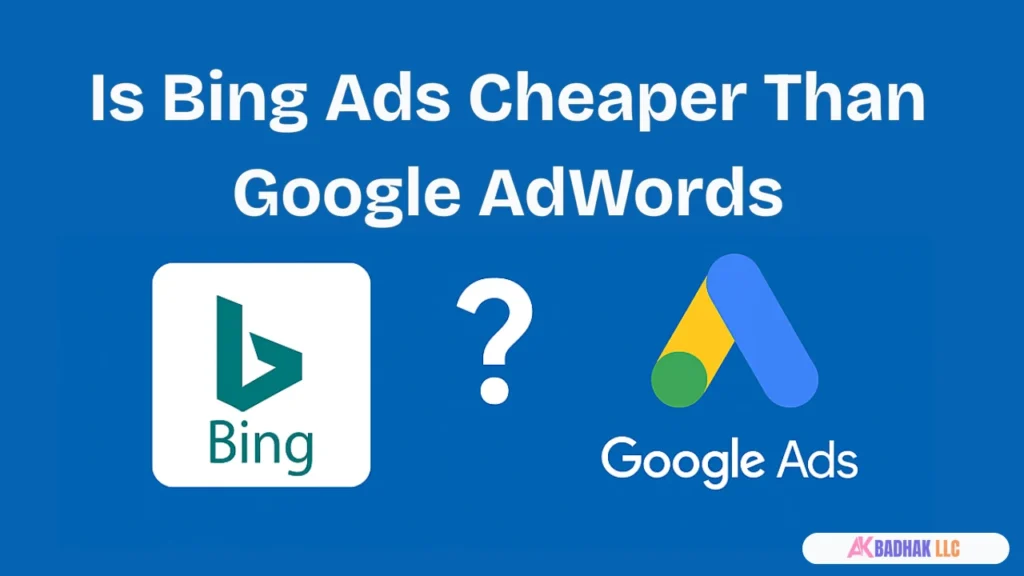
When it comes to online advertising, businesses are constantly looking for cost-effective platforms to maximize their return on investment (ROI). Two of the most popular platforms are Google AdWords (now known as Google Ads) and Bing Ads (now Microsoft Advertising). A common question among advertisers is: Is Bing Ads cheaper than Google AdWords? In this in-depth, SEO-optimized blog post, we’ll compare the costs, features, and benefits of both platforms to help you decide which one suits your business needs.
What Are Google Ads and Microsoft Advertising?
Before we compare costs, let’s briefly outline what each platform offers:
- Google Ads: Google Ads is the largest online advertising platform, allowing businesses to display ads on Google’s search engine results pages (SERPs), YouTube, and millions of partner websites through the Google Display Network. It’s known for its massive reach and advanced targeting capabilities.
- Microsoft Advertising (Bing Ads): Microsoft Advertising powers ads on Bing, Yahoo, AOL, and their partner sites. While it has a smaller market share than Google, it offers unique advantages, such as lower competition and access to a different audience demographic.
Both platforms operate on a pay-per-click (PPC) model, meaning you only pay when someone clicks on your ad. However, the cost per click (CPC), competition, and overall ad spend can vary significantly between the two.
Key Factors That Influence Ad Costs
To determine whether Bing Ads is cheaper than Google AdWords, we need to consider several factors that impact advertising costs:
- Cost Per Click (CPC): The amount you pay for each click on your ad.
- Competition: The number of advertisers bidding on the same keywords.
- Audience Reach: The size and demographics of the platform’s user base.
- Keyword Costs: The price of specific keywords based on demand.
- Ad Quality and Relevance: How well your ad matches user intent.
- Targeting Options: The ability to refine your audience to reduce wasted spend.
- Platform Features: Tools and integrations that impact campaign efficiency.
Let’s break down each factor and compare how Bing Ads and Google Ads perform.
1. Cost Per Click (CPC): Is Bing Ads Really Cheaper?
One of the most significant differences between Bing Ads and Google Ads is the cost per click. Studies and industry reports consistently show that Bing Ads typically has a lower CPC than Google Ads. Here’s why:
- Lower Competition: Google dominates the search engine market with over 90% of global search volume, making it a highly competitive platform. More advertisers bidding on Google Ads drive up keyword prices. Bing, with a smaller market share (around 6-7% in the U.S.), has less competition, resulting in lower CPCs.
- Industry Data: According to a 2023 report by WordStream, the average CPC across all industries on Bing Ads is approximately $1.54, compared to $2.69 for Google Ads. This represents a savings of about 43% per click on Bing.
- Niche Keywords: For highly competitive industries like legal services, insurance, or finance, Google Ads CPCs can soar to $50-$100 per click. On Bing, these same keywords often cost significantly less due to lower demand.
However, lower CPCs don’t always translate to better ROI. While Bing Ads may be cheaper, Google’s larger audience and higher conversion rates can sometimes justify the higher costs. The key is to analyze your specific industry and campaign goals.
2. Competition: Bing’s Edge in Less Crowded Markets
Competition is a critical driver of ad costs. Ascended to Google Ads is known for its fierce competition, especially for popular keywords. Businesses often find themselves bidding against dozens of competitors for prime ad placements, which drives up costs. Bing Ads, on the other hand, operates in a less crowded space.
- Lower Bidder Density: Fewer advertisers use Bing Ads, meaning you’re less likely to get outbid on your target keywords. This can result in lower costs and better ad placements for the same budget.
- Easier to Rank: On Bing, ads with moderate bids and quality scores can still achieve top positions, whereas Google often requires higher bids and more optimization to secure prime spots.
For small businesses or those in niche markets, Bing’s lower competition can make it a more cost-effective choice.
3. Audience Reach: Google’s Dominance vs. Bing’s Niche
Audience reach is a crucial factor when comparing ad platforms. Google Ads has an unparalleled reach:
- Global Dominance: Google processes over 8.5 billion searches per day, giving advertisers access to a massive audience.
- Diverse Channels: Beyond search, Google Ads includes YouTube, Gmail, and the Display Network, offering multiple ways to reach users.
Bing Ads, while smaller, still reaches a sizable audience:
- U.S. Market Share: Bing holds about 6.7% of the U.S. search market and is particularly strong among older, wealthier demographics who use Bing-powered search engines like Yahoo and AOL.
- Unique Audiences: Bing Ads reaches users who may not use Google as their primary search engine, providing access to a complementary audience.
While Google’s reach is undeniably larger, Bing’s audience can be highly valuable for businesses targeting specific demographics, such as professionals or older consumers.
4. Keyword Costs: Finding Affordable Opportunities
Keyword costs vary widely based on industry, competition, and platform. Google Ads often has higher keyword costs due to its popularity:
- High-Demand Keywords: Keywords like “car insurance,” “personal injury lawyer,” or “cloud hosting” can cost $20-$100 per click on Google Ads.
- Broad vs. Long-Tail Keywords: Broad keywords are more expensive on Google, while long-tail keywords (e.g., “affordable car insurance for seniors”) are generally cheaper but still cost more than on Bing.
Bing Ads offers more affordable keyword options:
- Lower Keyword Bids: The same keywords that cost $50 on Google may cost $10-$20 on Bing, making it easier to target high-intent users without breaking the bank.
- Long-Tail Opportunities: Bing’s lower competition makes it easier to rank for long-tail keywords at a fraction of the cost.
To maximize savings, use tools like Google Keyword Planner or Microsoft Advertising Keyword Planner to identify low-cost, high-intent keywords for your campaigns.
5. Ad Quality and Relevance: Optimizing for Lower Costs
Both platforms use a Quality Score (Google) or Quality Impact (Bing) to determine ad placement and cost. A higher score means lower CPCs and better ad positions. Here’s how they compare:
- Google Ads: Google’s Quality Score is based on ad relevance, landing page experience, and expected click-through rate (CTR). Optimizing for these factors can reduce costs, but the competitive environment makes it challenging to maintain a high score without significant effort.
- Bing Ads: Bing’s Quality Impact works similarly but is often easier to optimize due to lower competition. Well-crafted ads and relevant landing pages can lead to significant cost savings.
Pro Tip: Focus on creating highly relevant ads with clear calls-to-action (CTAs) and optimized landing pages to improve your Quality Score/Impact on both platforms.
6. Targeting Options: Precision vs. Cost
Both platforms offer robust targeting options, but their approaches differ:
- Google Ads: Offers advanced targeting, including demographics, interests, in-market audiences, and remarketing. However, premium targeting options (e.g., YouTube ads or custom audiences) can increase costs.
- Bing Ads: Provides similar targeting capabilities, including LinkedIn profile targeting (unique to Microsoft Advertising) for B2B campaigns. Bing’s targeting is often more cost-effective due to lower competition.
For businesses with tight budgets, Bing’s targeting options can deliver precise audiences at a lower cost, especially for professional or B2B campaigns.
7. Platform Features: Tools for Efficiency
Both platforms offer tools to optimize campaigns, but their features impact costs differently:
- Google Ads:
- Advanced automation (e.g., Smart Bidding, Responsive Ads).
- Integration with Google Analytics and Google Tag Manager.
- Higher learning curve and potential for overspending without proper management.
- Bing Ads:
- Similar automation tools but simpler interface.
- LinkedIn profile targeting and integration with Microsoft Clarity for analytics.
- Easier to manage for beginners, reducing setup costs.
Bing’s user-friendly platform can save time and money for small businesses or those new to PPC advertising.
Bing Ads vs. Google Ads: A Side-by-Side Cost Comparison
| Factor | Google Ads | Bing Ads |
|---|---|---|
| Average CPC | $2.69 (higher) | $1.54 (lower) |
| Competition | High | Low |
| Audience Reach | 8.5B daily searches, global | 6.7% U.S. market, niche demographics |
| Keyword Costs | Higher (e.g., $20-$100 for premium) | Lower (e.g., $10-$20 for premium) |
| Targeting Options | Advanced, premium options | Robust, cost-effective, LinkedIn integration |
| Ease of Use | Steeper learning curve | User-friendly |
When Should You Choose Bing Ads?
Bing Ads is often the cheaper option, but it’s not always the best choice. Consider Bing Ads if:
- You’re targeting older, professional, or wealthier demographics.
- You’re in a highly competitive industry with expensive Google Ads keywords.
- You have a limited budget and want to maximize clicks.
- You want to complement your Google Ads campaigns with additional reach.
When Should You Choose Google Ads?
Google Ads is worth the higher cost if:
- You need maximum reach and visibility.
- Your audience is broad and diverse.
- You’re leveraging YouTube or Display Network ads.
- You have the budget and expertise to optimize high-competition campaigns.
Combining Bing Ads and Google Ads for Maximum ROI
For many businesses, the best strategy is to use both platforms to capture different segments of their audience. Here’s how to combine them effectively:
- Start with Google Ads: Use Google Ads to target high-volume keywords and broad audiences. Optimize campaigns to maximize conversions.
- Supplement with Bing Ads: Use Bing Ads to target niche keywords and demographics at a lower cost. Focus on long-tail keywords and LinkedIn targeting for B2B campaigns.
- Track and Compare: Use analytics tools to compare CPC, CTR, and conversion rates across both platforms. Allocate budget to the platform delivering the best ROI.
- Test and Optimize: Continuously test ad copy, landing pages, and targeting options to improve Quality Scores and reduce costs.
Conclusion: Is Bing Ads Cheaper Than Google AdWords?
In most cases, Bing Ads is cheaper than Google AdWords, offering lower CPCs, less competition, and more affordable keyword options. However, the choice between the two depends on your business goals, target audience, and budget. Bing Ads is ideal for cost-conscious advertisers or those targeting niche demographics, while Google Ads excels for maximum reach and advanced targeting.
By understanding the strengths and weaknesses of each platform, you can create a PPC strategy that maximizes ROI while keeping costs in check. Whether you choose Bing Ads, Google Ads, or a combination of both, the key is to optimize your campaigns for relevance, quality, and performance.
Ready to get started? Experiment with both platforms, track your results, and discover which one delivers the best value for your business.
FAQs
1. Is Bing Ads more cost-effective than Google Ads?
Yes, Bing Ads generally has lower CPCs and less competition, making it more cost-effective for many advertisers. However, Google Ads may offer better ROI for high-volume campaigns due to its larger audience.
2. Can I use Bing Ads and Google Ads together?
Using both platforms allows you to capture different audiences and optimize your budget for maximum ROI.
3. What industries benefit most from Bing Ads?
Industries with high CPCs on Google, such as legal, insurance, and finance, often see significant savings on Bing Ads. B2B businesses also benefit from Bing’s LinkedIn targeting.
4. How do I reduce costs on Google Ads?
Optimize your Quality Score by improving ad relevance, landing page experience, and CTR. Use long-tail keywords and negative keywords to avoid wasted spend.
5. Does Bing Ads have the same reach as Google Ads?
No, Google Ads has a much larger reach due to its 90 %+ search market share. However, Bing Ads reaches unique demographics and complements Google Ads campaigns.
About us and this blog
We are a digital marketing company with a focus on helping our customers achieve great results across several key areas.
Request a free quote
We offer professional SEO services that help websites increase their organic search score drastically in order to compete for the highest rankings even when it comes to highly competitive keywords.


